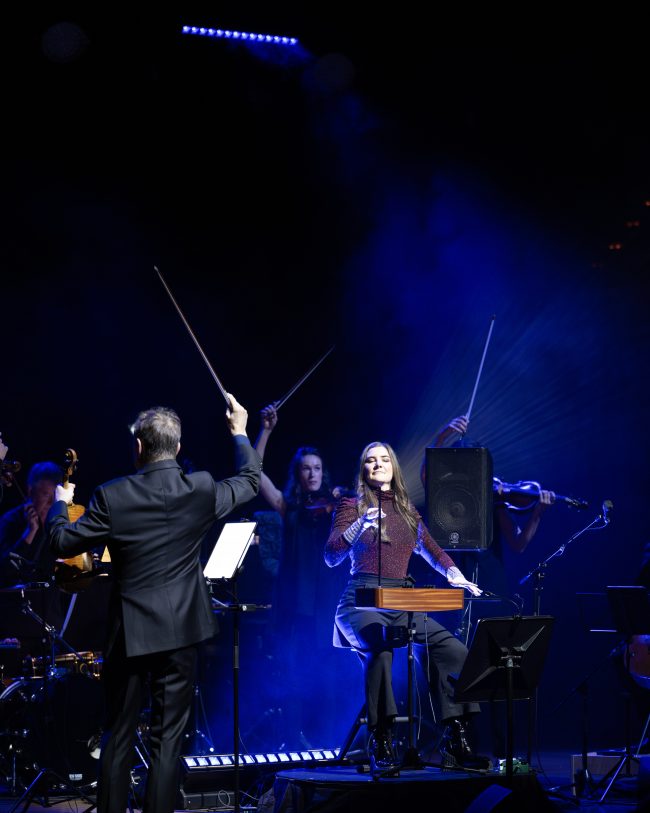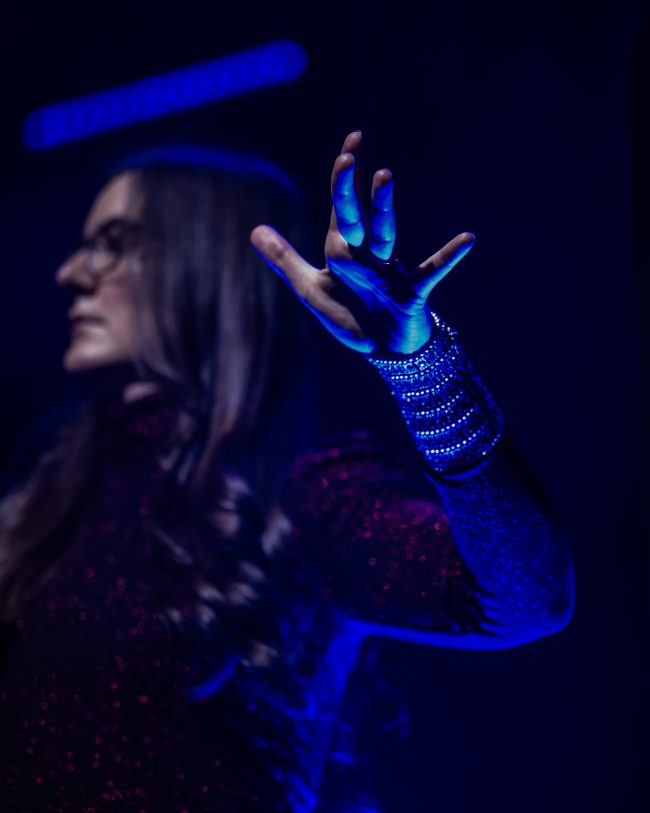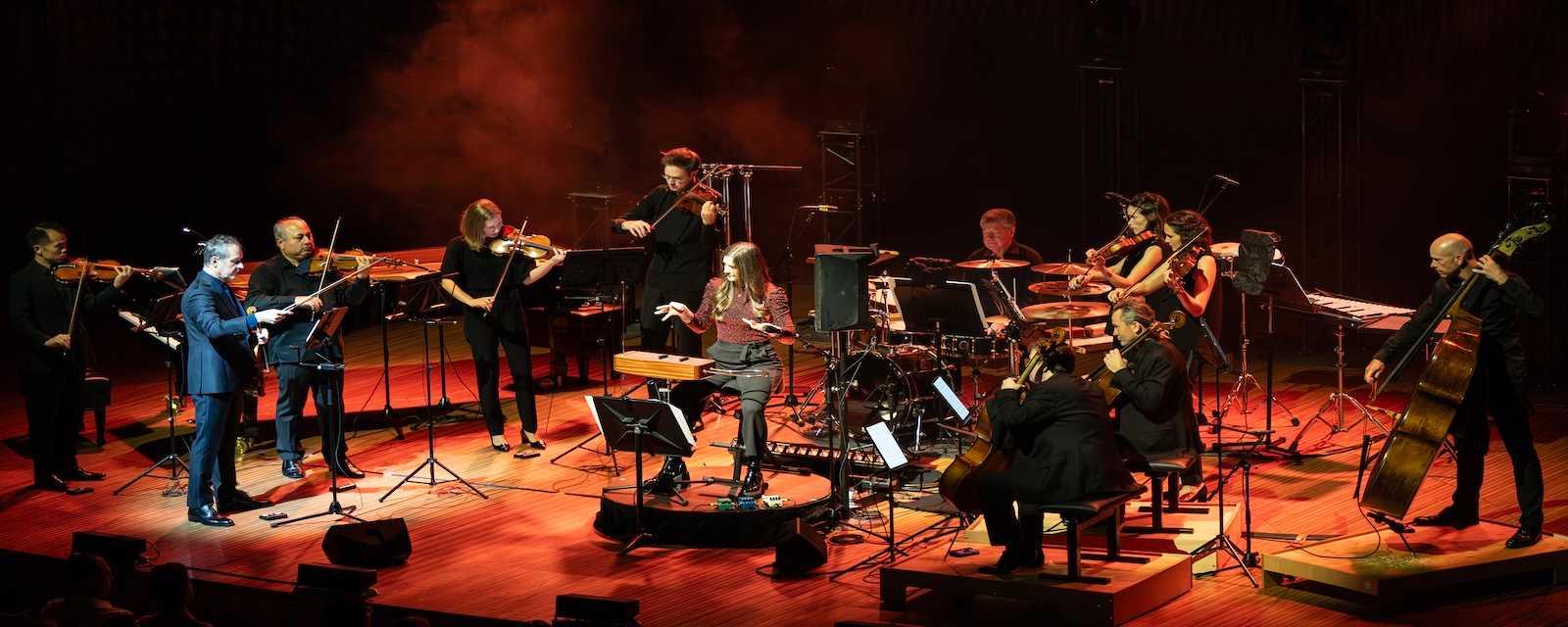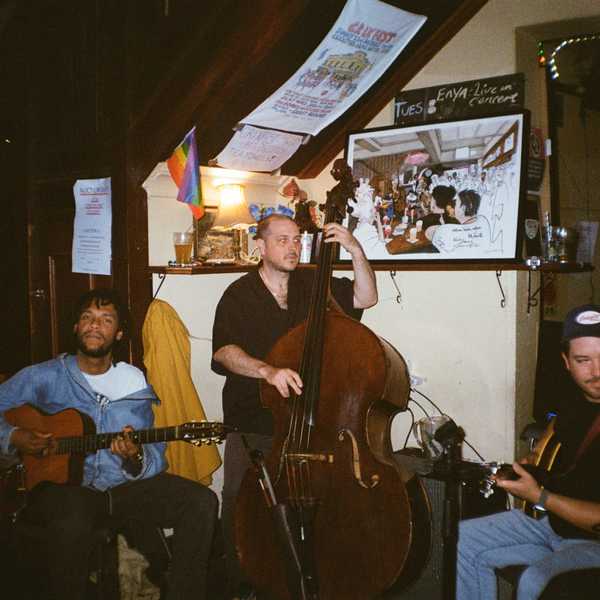Carolina Eyck (theremin)
Saturday 10 May 2025
Review by Paul Neeson (Arts Wednesday)

“The Theremin is often thought of as a novelty, but in the masterly hands of Carolina Eyck it becomes an instrument of classical majesty and contemporary brilliance.” (ACO program guide by Shaad D’Souza) This was the question I kept in my mind as I watched the Theremin and Beyond concert unfurl before me. Is the theremin capable of being more than a musical gimmick?
Brett Dean’s Short Stories: IV. Komarov’s Last Words opened the program with some ear catching string squeaks that not only cleared the ear wax from your ears, but cleared the preconceptions from your mind of what music could be. A brilliant start to the always clever programming from the ACO, particularly in light of what was to come.
After the sound of the theremin was musically introduced to us with Glinka’s A Farewell to St. Petersburg: The Lark, Eyck gave us an informative explanation about how the music is produced and manipulated from the electromagnetic fields of the theremin. This was followed by a set of well known popular classical tunes with Eyck as theremin soloist: Bach’s Air on a G-String, and a selection from Saint-Saëns’ Carnival of the Animals. In the Bach, the theremin was unashamedly an electronic solo instrument capable of emotional range and depth. The Elephant movement from Saint-Saëns paired the double bass (Maxime Bibeau) and the theremin alternating for the melody. This clearly gave us the opportunity to compare the real and the electronic, and while the theremin was a convincing simulacrum, the question still remained, was this just a clever party trick? In the Aquarium movement, the underwater slides lighting the hall added to the circus-like illusion, and the theremin seemed to sing like a human voice to the brilliant piano accompaniment from Tamara-Anna Cislowska. It also was a convincing substitute for the cello in The Swan.
Just when we thought the program was getting a bit on the schmaltzy side, Erwin Schullhoff came to the rescue with Five Pieces for String Quartet. Each of the five movements was loosely based on a dance form, the tango being the most recognisable, but the sound world belonged to the discordant music of the future. If the Brett Dean was futuristic, this was an apocalyptic assault on the senses. What a perfect counterfoil to what went before. Tognetti at his best!
The first half finished with Miklós Rózsa’s Spellbound Concerto, a moving reduction from the movie soundtrack originally composed for the theremin at Hitchcock’s suggestion.
So during interval there was much to contemplate. The programming of very contemporary string music with the saccharine offerings for the theremin, felt a bit like mixing dark chocolate with wasabi, the striking difference being more satisfying than the combination. Having heard the theremin cleverly mimicking various acoustic instruments plus its specific use as an attention grabbing sound in popular culture artefacts, the question as to whether it is more than a novelty still remained unanswered.

The 2nd half resumed with some more acerbic string music from Jörg Widmann. But what came next answered convincingly my question. Apart from brilliantly challenging programming, the other thing the ACO does better than anyone is commission new compositions. In this case it was Holly Harrison’s Hovercraft for theremin and chamber orchestra. Eyck’s handling of the complex score, that traversed soaring melodies to delicate accompaniment, difficult passages of runs and wide fluctuating ranges of pitch and timbre, demonstrated the full potential of the theremin as a deserving member of a classical orchestra. The audience was equally convinced of the stature of the theremin as they applauded Harrison to the stage.
As we dipped back into popular culture to finish, a delightful composition by Carolina Eyck herself Fantasia: Oakunar Lynntuja (Strange Birds) for theremin and strings. Very evocative of birds in a dark forest demonstrating the full range of Eyck’s dextrous technique. And how could you go wrong ending with a Morricone spaghetti western, Midsomer Murders and Good Vibrations (yes the Beach Boys scored it for theremin). What a clever finale: a breakneck rendition of Flight of the Bumblebee, with two bumblebees magically appearing in Eyck’s fingertips. Abracadabra!
In the mashup, the case was presented like an academic argument with the level of intellectual reasoning you would expect from the ACO. The 1st half contrasted clearly what the theremin has been known for, and what if you like is its antithesis. The 2nd half surprisingly demonstrated the instrument’s full potential as an inclusion in a serious classical orchestra. (Whoever foresaw the saxophone as an orchestral instrument?) All the while reminding us that from time to time we all need a bit of fun and magic in our lives. And who knows? Maybe dark chocolate and wasabi could become an acquired taste…..
You can hear a recent interview with Carolina Eyck below:
Share "Review: ACO Theremin and Beyond"
Copy











